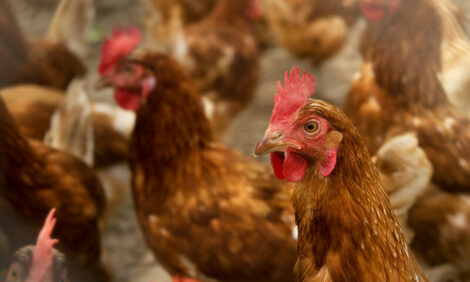



Checking Poultry Genes For Disease
US - Research funded by the U.S. Poultry & Egg Association studied the functional genomic and DNA microarray approach to identify key innate immunity genes as a novel selection method to identify chickens with increased resistance to disease.Chickens are most susceptible to infections during their first week of life. Innate immunity is the mechanism hatchlings have to protect themselves. By identifying chickens with increased innate immune responsiveness, it is likely to select breeding stock that produce progeny with increased resistance to multiple bacterial infections, still maintaining the desired growth qualities required by industry.
Objectives:
- Employ a functional genomics approach to identify high and low responding hens and roosters within a population of broilers using an innate-immune-specific oligonucleotide microarray and quantitative real-time RT-PCR (qRT-PCR).
- Carry out specific matings of high and low responders (and the reciprocal matings) to produce pedigreed progeny for subsequent analyses.
Results:
- Characterized the innate pro-inflammatory cytokine/chemokine profile of 119 sires and showed there were distinct populations of high and low responding sires. We identified 12 sires that were high responders for three out of four parameters and 11 sires that were low responders in three out of four parameters evaluated.
- Sires from both high and low responding groups were mated to hens and a pedigreed progeny population was produced. Blood samples were collected from 213 progeny and the cytokine/chemokine profiles determined by qRT-PCR. Progeny from “high” sires had significantly higher cytokine/chemokine values compared to progeny from “low” sires. These data indicate the cytokine/chemokine profile of sires is passed to progeny.
They have shown there are clear and measurable innate immunity parameters under genetic control. This knowledge will allow Them to evaluate individual lines of chickens and provide the poultry industry with valuable information regarding the immune-competence of breeding stock. They are now moving beyond the theoretical and into the practical application with the ongoing selection trial.
They have:
- identified a broiler population of sires with stronger and/or weaker-than-average pro-inflammatory cytokine/chemokine responses and
- utilized small numbers of high and low responding sires to produce progeny with increased or decreased, respectively, pro-inflammatory cytokine/chemokine profiles.
They believe this will allow us to improve the broiler population of breeding stock by improving their immunological responsiveness. The desired growth qualities would already be in place but now the line would also have an effective pro-inflammatory innate immune response with improved resistance against diverse pathogens, as well as improved immune responses to vaccines. A new line of chickens based on selection of an innate immune response would hopefully yield birds that exhibit resistance to multiple pathogens, increased responsiveness to vaccination, require fewer antibiotics, increased livability, and are generally healthier.











